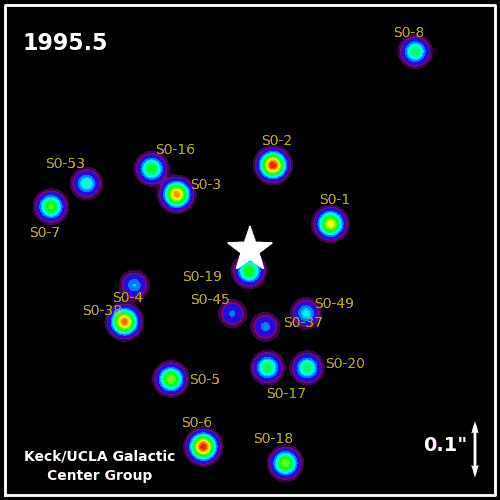The biggest black hole in the known universe

The black hole results from the collapse of a supermassive star, in the core of which ends the “fuel” for a nuclear reaction. With compression, the core temperature rises, and photons with energies above 511 keV, colliding, form electron-positron pairs, which leads to a catastrophic decrease in pressure and further star collapse under the influence of its own gravity.
Astrophysicist Ethan Siegel published the article “The Largest Black Hole in the Known Universe,” in which he gathered information about the mass of black holes in different galaxies. Just wondering: where is the most massive of them?
Since the densest clusters of stars are in the center of galaxies, now almost every galaxy has a massive black hole in the center, formed after the confluence of many others. For example, in the center of the Milky Way there is a black hole weighing about 0.1% of our galaxy, that is, 4 million times the mass of the Sun.
')
It is very easy to determine the presence of a black hole by examining the trajectory of the stars, which are affected by the gravity of an invisible body.

But the Milky Way is a relatively small galaxy, which in no way can have the largest black hole. For example, not far from us in the cluster of Virgo is a giant galaxy Messier 87 - it is about 200 times larger than ours.
So, from the center of this galaxy, a stream of matter about 5000 light-years in length is pulled out (in the photo). This is a crazy anomaly, writes Ethan Siegel, but it looks very beautiful.

Scientists believe that the explanation of such an "eruption" from the center of the galaxy can only be a black hole. Calculation shows that the mass of this black hole is about 1500 times greater than the mass of the black hole in the Milky Way, that is, about 6.6 billion solar masses.
But where is the biggest black hole in the universe? If we proceed from the calculation that in the center of almost every galaxy there is such an object with a mass of 0.1% of the mass of the galaxy, then you need to find the most massive galaxy. Scientists can answer this question.
The most massive galaxy we know of is the IC 1101 galaxy in the center of the Abell 2029 cluster, which is 20 times farther from the Milky Way than the Virgo cluster.

In IC 1101, the distance from the center to the farthest edge is about 2 million light years. Its size is twice as large as the distance from the Milky Way to the Andromeda galaxy nearest to us. Mass is almost equal to the mass of the entire cluster of Virgo!
If there is a black hole in the center of IC 1101 (and it should be there), then it can be the most massive in the known universe.
Ethan Siegel says he may be wrong. The reason is in the unique galaxy NGC 1277. This is not a very large galaxy, a little smaller than ours. But the analysis of its rotation showed an incredible result: the black hole in the center is 17 billion solar masses, and this is as much as 17% of the total mass of the galaxy. This is a record for the ratio of the mass of the black hole to the mass of the galaxy.

There is one more candidate for the role of the largest black hole in the known Universe. He is depicted in the next photo.

The strange object OJ 287 is called a blazar . Blazars are a special class of extragalactic objects, a type of quasars. They are distinguished by very powerful radiation, which in OJ 287 varies with a cycle of 11–12 years (with a double peak).
According to astrophysicists, OJ 287 includes a supermassive central black hole, in whose orbit another smaller black hole rotates. The central black hole at 18 billion solar masses is the largest known so far.

This pair of black holes will be one of the best experiments to test the general theory of relativity, namely, the deformation of spacetime described in GR.
Due to the relativistic effects of the black hole perihelions, that is, the point of the orbit nearest to the center black hole, must shift by 39 ° in one revolution! For comparison, the perihelion of Mercury has shifted by only 43 arc-seconds per century.
Source: https://habr.com/ru/post/226411/
All Articles